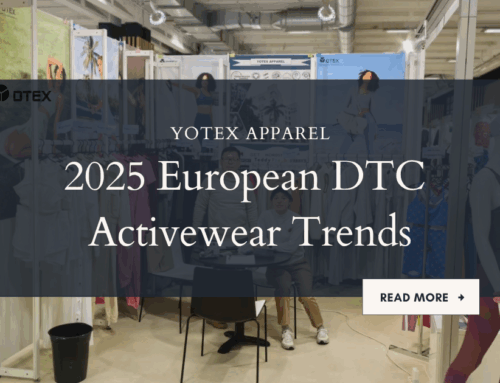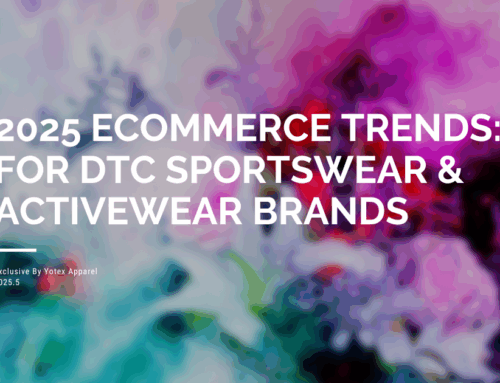Summary
The summer of 2025 brings both opportunity and challenge for the outdoor sportswear industry. With global outdoor apparel sales reaching roughly $37.1 billion in 2024 and projected to grow at a 6.9% CAGR through 2034, consumer demand for high-performance garments remains robust.(according to Global Market Insights Inc.
Yet the lingering effects of the U.S.–China tariff war—where apparel import duties have fluctuated between an average of 14.5% in 2024 and spikes above 30%—continue to squeeze margins and reshape supply chains.
Against this backdrop, summer sports events from coastal marathons to outdoor soccer tournaments are fueling demand for breathable, durable gear. Leading brands are turning to specialist partners—functional sportswear manufacturers, outdoor wear factories, outdoor jackets manufacturers, and travel coats suppliers—to navigate cost pressures while delivering cutting-edge products. In this article, we explore market trends, tariff impacts, event-driven demand, and YOTEX’s role as a strategic manufacturing partner to help readers and potential buyers find the best solutions for their summer adventure needs.
1. Summer Outdoor Sportswear Market Dynamics
1.1 Market Size and Growth
The global outdoor apparel and accessories market was valued at USD 37.1 billion in 2024 and is expected to expand at a 6.9% CAGR from 2025 to 2034. (according to Global Market Insights Inc.)
Outdoor market retail sales in North America alone topped USD 28 billion in 2024, reflecting a steady 1% year-over-year increase despite broader economic headwinds. Footwear and accessories led growth in 2024, while apparel overall remained flat, highlighting both a surge in casual outdoor trends and persistent consumer interest in performance gear.
1.2 Consumer Preferences
Modern outdoor enthusiasts prioritize versatility and comfort. Athleisure’s fusion of function and fashion is now mainstream: the global athleisure market reached USD 425 billion in 2025, with a forecast to surpass USD 941 billion by 2034. Lightweight packability, moisture-wicking performance, UV protection, and sustainable materials top the feature list. These trends underscore why many brands seek collaboration with a functional sportswear manufacturer capable of marrying technical innovation with design appeal.
1.3 Impact of Seasonality
Summer specifically drives a surge in demand for breathable hiking jackets, lightweight running tops, and UV-resistant outer layers. According to the Outdoor Industry Association, summer months account for nearly 40% of annual outdoor apparel sales in North America. Brands respond by launching season-specific collections developed in partnership with specialized outdoor wear factories that can quickly scale production and maintain tight quality control.
2. The US–China Tariff Environment
2.1 Evolution of Tariffs on Apparel
Since 2018, U.S. punitive tariffs on Chinese goods have heavily impacted the apparel sector. By 2024, the average U.S. import tariff rate on apparel climbed to 30.6% from 14.5% the year prior . China retaliated with levies on U.S. cotton exports as high as 140%, dramatically curtailing bilateral trade in textiles and raw materials.
2.2 Recent Truces and Lingering Uncertainty
In May 2025, a 90-day tariff truce between Washington and Beijing temporarily rolled back U.S. duties from 145% to 30%, offering momentary relief to brands and retailers. Yet industry leaders caution that this reprieve may be fleeting, and many are exploring diversification of sourcing to Vietnam, Indonesia, and domestic U.S. production.
2.3 Supply-Chain Shifts
Tariff volatility has prompted a shift among outdoor jackets manufacturers and travel coats suppliers toward multi-country sourcing strategies. A recent Reuters analysis noted that over 61% of U.S. sporting goods imports in 2024 originated in China, making the industry especially vulnerable to duty changes. In response, some brands have begun partial relocation of production to ASEAN countries, while others invest in “near-shoring” to U.S. facilities for greater supply-chain resilience.
3. Sports-Event–Driven Demand in Summer 2025
3.1 Running and Trail Races
Summer race calendars—from city marathons to charity trail runs—remain key demand drivers. Lightweight, sweat-wicking outdoor jackets with high MVTR ratings (>20,000 g/m²/24 h) are sought after for pre-race warmups and post-race cool-down layers. Outdoor jackets manufacturers are innovating with mesh-lined ventilated zones and packable designs to accommodate unpredictable weather and on-the-go athletes.
3.2 Ball Sports: Beach Volleyball to Soccer Tournaments
Coastal and park-based sports, such as beach volleyball and summer soccer leagues, spur demand for UV-blocking travel coats and lightweight windbreakers. UPF 50+ rated jackets are increasingly popular among spectators as much as players, protecting against sunburn during all-day tournaments. Leading travel coats suppliers now integrate moisture-management finishes alongside breathable stretch panels for maximum comfort.
3.3 Multi-Discipline Events
Events like triathlons and adventure races blend running, cycling, and paddling. Athletes require all-purpose layers that resist wind, repel water, and dry rapidly. Functional sportswear manufacturers with R&D in phase-change materials and hydrophobic treatments are at the forefront, partnering with race organizers to develop event-branded shells that deliver both performance and promotional visibility.
4. YOTEX’s Role as a Strategic Manufacturing Partner
4.1 Comprehensive Capabilities
YOTEX Apparel is a professional functional sportswear manufacturer based in China, offering one-stop full–package services—from material sourcing to bulk delivery—for USA and EU markets. With knit, woven, and seamless production lines at its Jiangsu and Fujian facilities, YOTEX functions as both outdoor wear factory and outdoor jackets manufacturer, capable of small–batch runs (starting at 100 pcs) and mass production up to 10,000 pcs per month.
4.2 Technical Expertise
Leveraging partnerships with leading fabric mills—supplying Lycra, Coolmax, Ripstop, and advanced DWR finishes—YOTEX ensures garments meet rigorous performance standards such as ISO 811 waterproof ratings and MVTR testing. Their vertical integration allows tight quality control, reducing defects and enabling faster time-to-market for seasonal releases.
4.3 Ethical and Sustainable Practices
YOTEX’s facilities hold SMETA audit certifications that attest to ethical labor and environmental management practices, including wastewater treatment and worker safety programs. These credentials serve brands targeting ESG-conscious consumers, enhancing the appeal of products labeled “made in a responsible outdoor wear factory.”
5. Supply-Chain Strategies for Tariff Mitigation
5.1 Diversified Sourcing
To hedge against tariff shocks, brands are working with travel coats suppliers and outdoor jackets manufacturers who maintain multi-country production networks. YOTEX’s joint ventures in ASEAN enable shifting up to 30% of orders outside China with minimal lead-time penalties.
5.2 Near-Shoring and U.S. Partnerships
Some performance labels are forging alliances with U.S. converters and cutting facilities, effectively courting a “made in USA” narrative while retaining high-tech fabric imports. This hybrid model—fabric from Asia, final assembly in the U.S.—helps avoid the highest tariffs while appealing to domestic-preference procurement policies.
5.3 Duty-Deferral and Bonded Warehousing
Advanced customs strategies, such as foreign-trade zones and bonded-warehouse programs, allow finished goods to be stored tariff-free until distribution, smoothing cash-flow and protecting inventory values during tariff uncertainty.
Read more about how to break through and make sportswear fly off the shelves during the tariff war!


